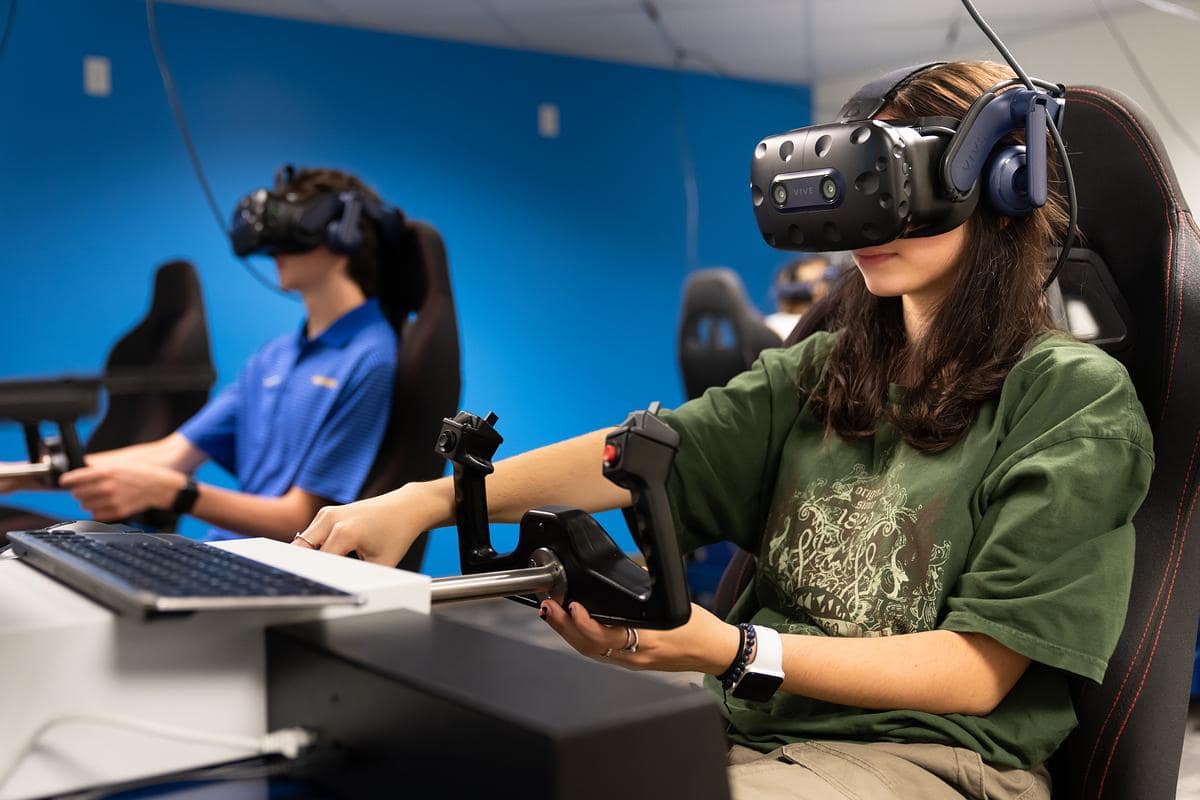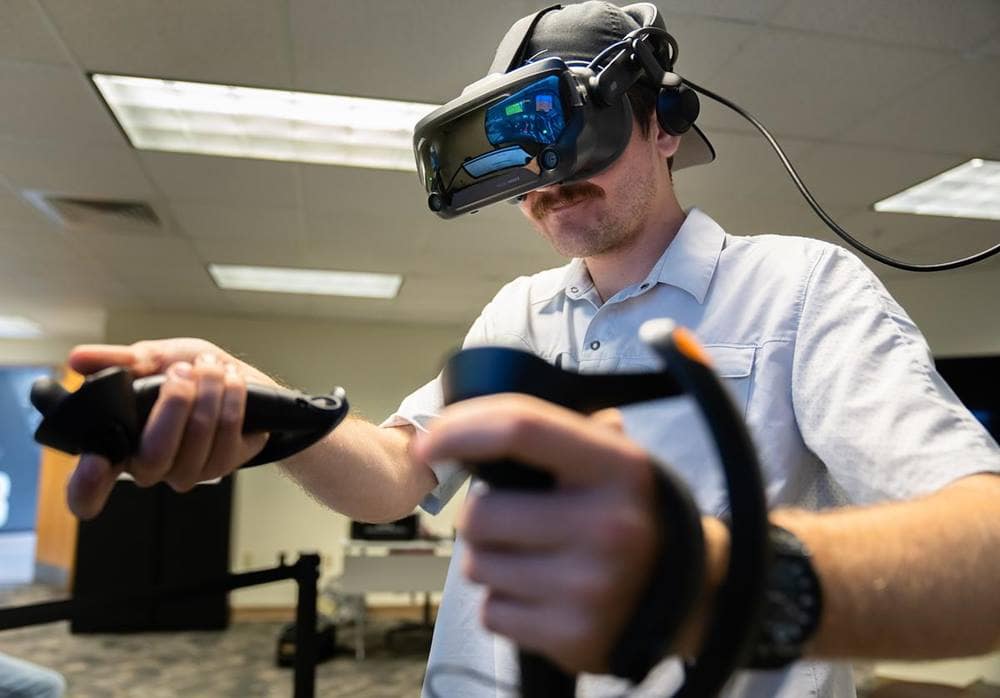Virtual Reality Flight-Training Program at Embry-Riddle Set for Expansion


As the flight-training industry increasingly moves toward virtual reality (VR) as one way to combat the looming pilot shortage, Embry-Riddle Aeronautical University will further expand its VR capabilities this fall — a move that will allow 100 additional students to advance through the program this year.
By having students begin their training in the virtual space, they save both time and money, according to Dr. Ken Byrnes, Flight Department chair and assistant dean of the College of Aviation. Embry-Riddle’s new VR training regimen for all Flight students on the Daytona Beach Campus, for instance, reduced the amount of time it takes pilots-in-training to make it to their first solo flight by 30% in the program’s inaugural year.
“Aeronautical Science freshmen are fully immersed in VR for their first four weeks on campus,” Byrnes said. “They get acquainted with the aircraft through these high-fidelity environments, perform preflight checks, learn the controls. By the time they sit inside of a physical airplane, they’re fully prepared. They want to fly.”
Frontloading the program with VR in this way also builds students’ confidence and reduces their anxiety — which is the main barrier to learning, Byrnes is quick to point out — before they ever set foot in a flight deck. That’s why the university is renewing its commitment to VR this fall, adding two additional simulation stations that will increase the lab’s total from eight to 10 units.
“Essentially, we’ve increased capacity by increasing efficiency,” Byrnes said. “When students are in these virtual environments, it is real to them. They sacrifice nothing in terms of educational quality.”

Embry-Riddle student Cody Hubbard, a junior Aeronautical Science major, runs through a virtual-reality simulation of a plane's preflight checklist at the Advanced Flight Simulation Center. (Photo: Embry-Riddle/Bernard Wilchusky)
In Support of Deeper Learning
New award-winning research conducted by recent Embry-Riddle alumnus Tianxin Zhang (’22) validates the university’s recent push into the virtual space.
“Tianxin’s study is groundbreaking,” said Dr. Christina Frederick, a professor in Embry-Riddle’s Department of Human Factors and Behavioral Neurobiology, who also served as Zhang’s dissertation chair. “His findings showed that VR is at least as effective, and potentially more engaging, than other training methods, which may motivate deeper learning and greater persistence in student pilots.”
The results of Zhang’s research are in line with Embry-Riddle’s VR-first approach, and his project won the Aerospace Human Factors Association’s Stanley N. Roscoe Award, which recognizes the best doctoral dissertation written in this area of study.
“The findings showed that participants in the VR group performed better in the post-training test, compared to other groups,” said Zhang, who graduated in May with his Ph.D. in Human Factors. “Moreso, the VR flight simulations seem to provide a better user experience and can cause a greater motivation for usage.”
Zhang, who also earned a bachelor’s in Aviation Maintenance and a master’s in Aeronautics from Embry-Riddle, said his work contributes to the positive evidence that VR simulations can be an effective tool for novice pilots, while reducing training costs and increasing safety. They can also speed the entry of more highly skilled pilots and maintenance technicians into the workforce — a critical goal as airlines and the military continue to face huge workforce gaps.
“Training with VR is in its infancy, and Zhang’s study is foundational to building knowledge of how VR may be used to train pilots,” said Frederick. “His research supports our university's mission to train the very best of today's pilots, while using scientifically valid and cutting-edge technologies.”
Interest in VR technology for training crosses multiple aviation segments, from general aviation to vertical lift to air transport, said Dr. Barbara Holder, associate professor and presidential fellow at Embry-Riddle’s School of Graduate Studies. The interest also spans workgroups, such as pilots, maintainers, ramp personnel and air traffic controllers.
New and inventive ways to incorporate VR into training are always being investigated, Holder added, noting that the more we understand about the technology, the better equipped we will be to take advantage of its strengths and mitigate its limitations.
“VR technology has been around for decades, but as the technology continues to advance rapidly, the new training opportunities will emerge,” said Holder.
VR offers many scheduling and cost-saving perks — virtual aircraft are never grounded by bad weather, for one, they don’t require fuel or highly skilled crews to maintain them, etc. — but ultimately, the added accessibility this technology offers is only in service to safety, Byrnes added. Greater accessibility means more opportunities for repetition, correction and review. That’s the path to proficiency.
“We’re not just teaching students how to fly here,” he said. “We are training world-class safety professionals.”
*Mike Cavaliere contributed to this report

 Melanie Stawicki Azam
Melanie Stawicki Azam